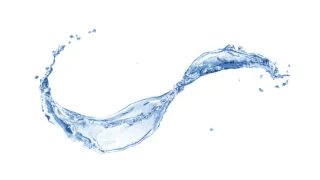
Sustainable Materials
Sustainable Raw Materials will power our future, green energy, transport, and mobility
Achieving carbon-neutrality by 2050 means our future transport and mobility will be electric, and our energy will be green and renewable. Disruptive innovation across the mobility and energy sectors is well underway. It continues to intensify as Europe races to half carbon emissions by 2030. EIT RawMaterials supports and funds innovation and education linked to green energy and mobility under the Sustainable Materials Lighthouse to drive this green energy transition.
Sustainable, electric transport and mobility
70% of all new vehicles will be electric by 2030 (2021 McKinsey & Company report). Car manufacturers worldwide are investing billions in electrifying their fleets. An EIT RawMaterials partner, Swedish battery maker Northvolt, aims to produce 150gwh of batteries by 2030 —enough to power two million electric vehicles (EVs). By then, the company should be sourcing around half its raw materials from recycling old batteries.
Finnish Minerals Group (FMG), EIT RawMaterials partner, aims to responsibly maximise the value of Finnish minerals to power green mobility. The company is developing a sustainable battery value chain. FMG is currently evaluating the potential of the Sokli deposit in Finland, which contains rare earth elements (REE), manganese, vermiculite, niobium, and copper, which are vital for the EV sector.
Under the European Raw Materials Alliance (ERMA), EIT RawMaterials works closely with a Finnish mining and battery-chemical company Keliber. The company has recently obtained environmental and building permits and a windfall investment of €500 million for its lithium chemical plant in Kokkola, Finland. With demand for lithium products estimated to grow by 20% per year in Europe and geopolitical concerns affecting non-EU supply, Keliber will be a core asset for Europe.
Similarly, the aviation industry is investing in reducing CO2 emissions and noise, and electric aviation looks likely to be one of the next breakthrough technologies. While electric bikes, scooters, and more are redefining everyday transport in our cities.
Sustainable, renewable energy
There are also huge advances in renewable energy. WindEurope, reports that 15% of Europe is now powered by wind. In countries like Denmark, wind power provides as much as 44% of energy. The European Commission views wind as providing half of Europe’s energy needs by 2050.
Solar power is one of the most cost-effective and fastest-growing renewable energy forms. The European Commission reports that the EU reached almost 160 GW from installed solar panels in 2021, compared with 52 GW in 2011. Next-generation technology is reducing the carbon footprint associated with manufacturing and enabling the recycling of valuable materials at the solar panel’s end-of-life.
The Need for the Sustainable Materials Lighthouse
The new sustainable mobility and energy technologies are only possible with secure European access to large volumes of sustainable raw materials. For example, lithium, cobalt, and nickel are just three of the critical raw materials needed for EV batteries. They are just some raw materials where increasing demand will dramatically exceed current production in the next 10 to 15 years.
Other materials, such as rare earths like neodymium, are crucial for wind turbines. Limited access to these materials could negatively impact the green mobility and energy transition, thus reducing Europe’s global competitiveness and resilience.
New, disruptive, and deep tech innovations and solutions are crucial to strengthening Europe’s access to sustainable raw materials and improving the recycling of end-of-life vehicles, batteries, solar panels, and more. Innovation is also vital to improving efficiency, cost reduction, and reducing carbon footprint in design and manufacturing.
For example, three EIT RawMaterials-supported start-ups are innovating across the entire solar panel value chain in Europe. Their solutions are enabling the recycling of valuable materials from end-of-life solar panels, as well as reducing the volume of raw materials used in the manufacturing process.
The Sustainable Materials Lighthouse
Guiding Key Innovation Trends in Future Mobility and Energy
Our Sustainable Materials Lighthouse guides innovation in the making, using, and recycling of sustainable and cost-efficient raw materials for future green mobility and energy.
Under the Sustainable Materials Lighthouse, EIT RawMaterials funds and supports innovation projects and activities to improve electrification, resource efficiency, substituting toxic and/or critical materials, and cost reduction.
These include high-level matchmaking and knowledge-sharing events such as the annual RawMaterials Expert Forum and education initiatives under the EIT RawMaterials Academy. Other activities include the Booster Call for start-ups and SMEs innovating in sustainable materials and specific Lighthouse calls for innovation projects.
Key innovation trends supported under the Sustainable Materials Lighthouse include:
- Batteries – development of batteries with a higher energy density, power, and longer lifetime.
- Magnets and motors – innovative and advanced processing and manufacturing to enable, amongst other goals, the most energy-efficient wind turbines.
- Photovoltaics (solar panels) – projects that increase performance and substitute or reduce costly, critical, and/or toxic materials.
- Electronics – resource-efficient design, miniaturisation, printed electronics, substituting materials with organic compounds, and more.


